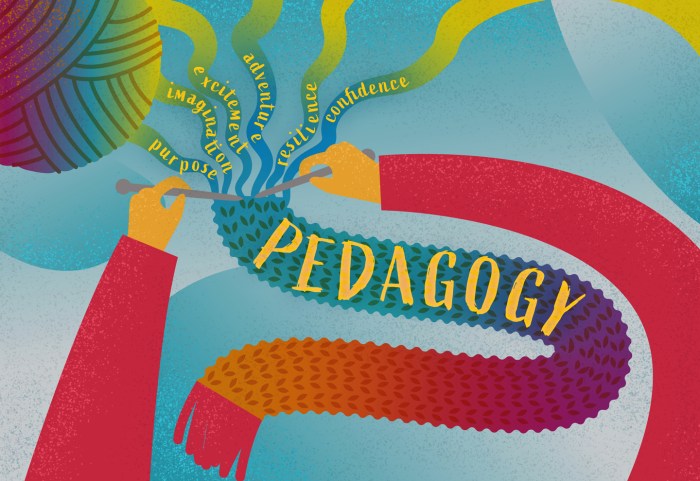Pedagogy of physical culture and sports, the art of teaching and learning physical activities, encompasses a diverse range of principles, practices, and innovations that shape the field of physical education. This comprehensive guide delves into the historical evolution, theoretical frameworks, and effective methods employed in pedagogy, while also exploring the use of technology, assessment techniques, and inclusive practices to cater to diverse populations.
From the fundamental principles that guide teaching to the latest research shaping future directions, this exploration unveils the intricacies of pedagogy in physical culture and sports, providing valuable insights for educators, coaches, and students alike.
Pedagogical Principles in Physical Culture and Sports

The pedagogy of physical culture and sports is guided by a set of fundamental principles that underpin the teaching and learning of physical activities. These principles include:
- The principle of individualization:This principle emphasizes the importance of adapting teaching to the individual needs and abilities of students.
- The principle of progression:This principle suggests that teaching should proceed from simple to complex activities, gradually increasing the difficulty and intensity of the activities.
- The principle of variety:This principle recommends using a variety of teaching methods and activities to maintain student interest and motivation.
- The principle of feedback:This principle stresses the importance of providing students with feedback on their performance to help them improve.
Historical Evolution of Pedagogy in Physical Culture and Sports
The pedagogy of physical culture and sports has evolved over time, influenced by societal and cultural factors. Key figures and movements that have shaped the field include:
- Friedrich Ludwig Jahn (1778-1852):Jahn is considered the father of physical education in Germany. He developed a system of gymnastics that emphasized physical fitness and national pride.
- Per Henrik Ling (1776-1839):Ling developed a system of gymnastics known as the Swedish system, which focused on corrective exercises and injury prevention.
- Thomas Arnold (1795-1842):Arnold introduced physical education into the curriculum of Rugby School in England. He believed that physical activity could help develop character and discipline.
Theoretical Frameworks for Pedagogy in Physical Culture and Sports
Different theoretical frameworks inform the pedagogy of physical culture and sports, including:
- Behaviorism:Behaviorism focuses on observable behaviors and how they are shaped by reinforcement and punishment.
- Cognitivism:Cognitivism emphasizes the role of mental processes, such as attention, memory, and problem-solving, in learning.
- Constructivism:Constructivism suggests that learners actively construct their own knowledge and understanding through experience.
Pedagogical Methods and Strategies in Physical Culture and Sports, Pedagogy of physical culture and sports
A range of pedagogical methods and strategies are used in physical culture and sports, including:
- Direct instruction:This method involves the teacher demonstrating and explaining a skill or activity, followed by students practicing the skill.
- Guided discovery:This method allows students to explore and discover skills and activities on their own, with guidance from the teacher.
- Problem-based learning:This method presents students with a problem or challenge and allows them to work together to find a solution.
Assessment and Evaluation in Physical Culture and Sports
Assessment and evaluation are essential components of the pedagogy of physical culture and sports, allowing teachers to track student progress and identify areas for improvement.
Different assessment methods include:
- Performance-based assessments:These assessments evaluate students’ ability to perform physical skills and activities.
- Written assessments:These assessments evaluate students’ knowledge and understanding of physical culture and sports.
- Self-assessments:These assessments allow students to reflect on their own learning and progress.
Pedagogy in Physical Culture and Sports for Diverse Populations
It is important to adapt pedagogical approaches to meet the needs of diverse populations, including students with disabilities, cultural differences, or other unique needs.
Specific strategies for teaching physical culture and sports to diverse populations include:
- Using assistive technology:Assistive technology can help students with disabilities participate in physical activities.
- Modifying activities:Activities can be modified to make them more accessible for students with different abilities.
- Creating a supportive learning environment:A supportive learning environment can help students from diverse backgrounds feel comfortable and engaged.
Technology and Pedagogy in Physical Culture and Sports
Technology can enhance the pedagogy of physical culture and sports, providing new opportunities for teaching and learning.
Benefits of using technology in physical education include:
- Increased motivation:Technology can make learning more engaging and motivating for students.
- Improved feedback:Technology can provide teachers with more detailed and timely feedback on student performance.
- Personalized learning:Technology can be used to personalize learning experiences for each student.
Research in Pedagogy of Physical Culture and Sports
Research is essential for advancing the field of pedagogy in physical culture and sports. Current research trends include:
- The use of technology in physical education:Researchers are exploring how technology can be used to improve teaching and learning.
- The development of new pedagogical approaches:Researchers are developing new pedagogical approaches that are more effective and engaging for students.
- The impact of physical activity on health and well-being:Researchers are investigating the impact of physical activity on physical, mental, and social health.
FAQ Summary: Pedagogy Of Physical Culture And Sports
What are the key principles of pedagogy in physical culture and sports?
The fundamental principles include learner-centeredness, inclusivity, developmentally appropriate practices, and the integration of cognitive and physical domains.
How has technology influenced pedagogy in physical culture and sports?
Technology has enhanced teaching and learning through interactive simulations, personalized feedback systems, and data analysis tools that inform pedagogical decisions.
Why is it important to adapt pedagogical approaches for diverse populations?
Tailoring instruction to meet the needs of students with disabilities, cultural differences, or other unique requirements ensures equitable access to physical education and promotes inclusive learning environments.


